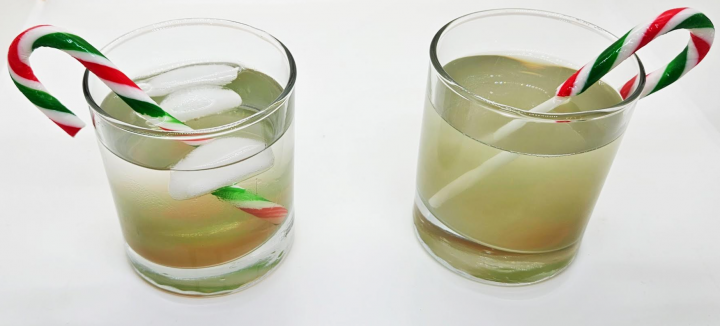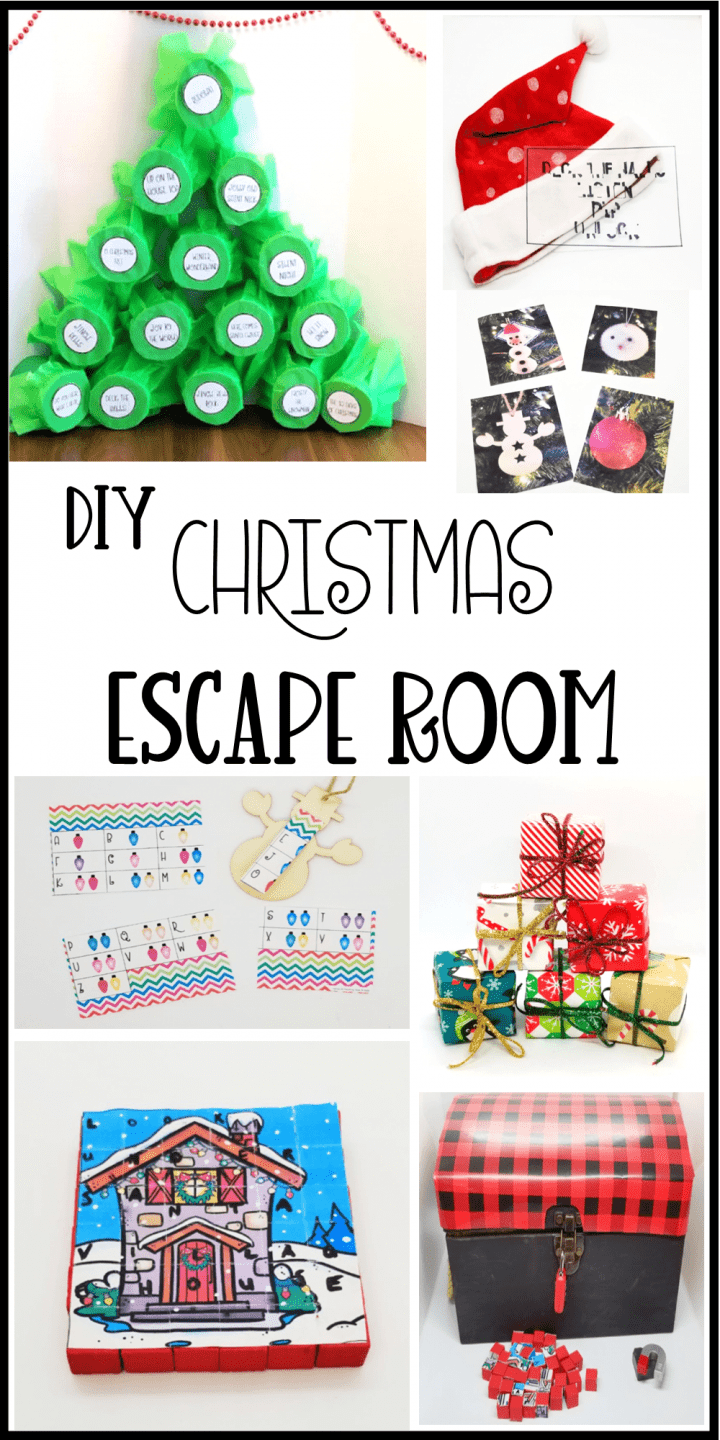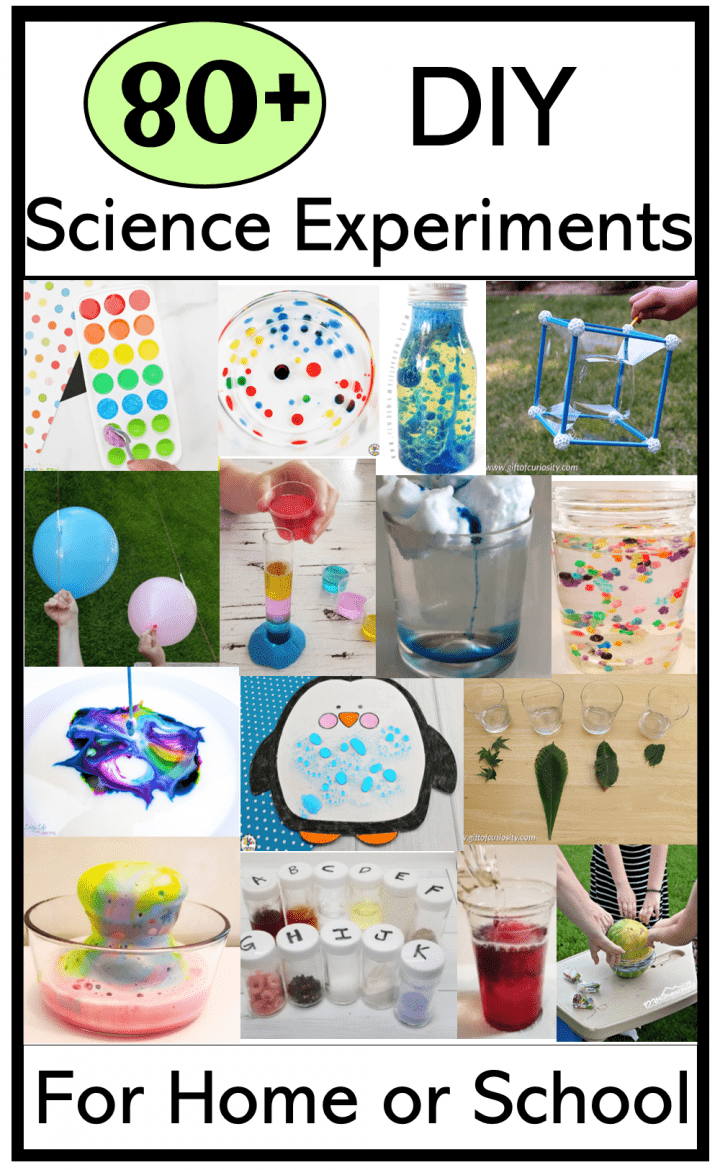This post may contain affiliate links.
Do you find you end up with lots of candy canes around the holiday season? They cute and tasty, but they’re also great for easy science projects! I did this experiment with my students at school and they loved it. It’s simple and kid friendly so even young children can join the fun.
When I came across a bunch of left over candy canes the other day, although my kids would have happily eaten them, we decided that we could use them for some really easy science projects – and it was a great way to avoid wasting them.
As it turns out, candy cane science experiments are really simple and fun! Initially I did this experiment at home with my own kids, but then I repeated it at school with a group of kindergarten children. So grab a few candy canes, cups and water for this holiday themed candy cane science experiment.
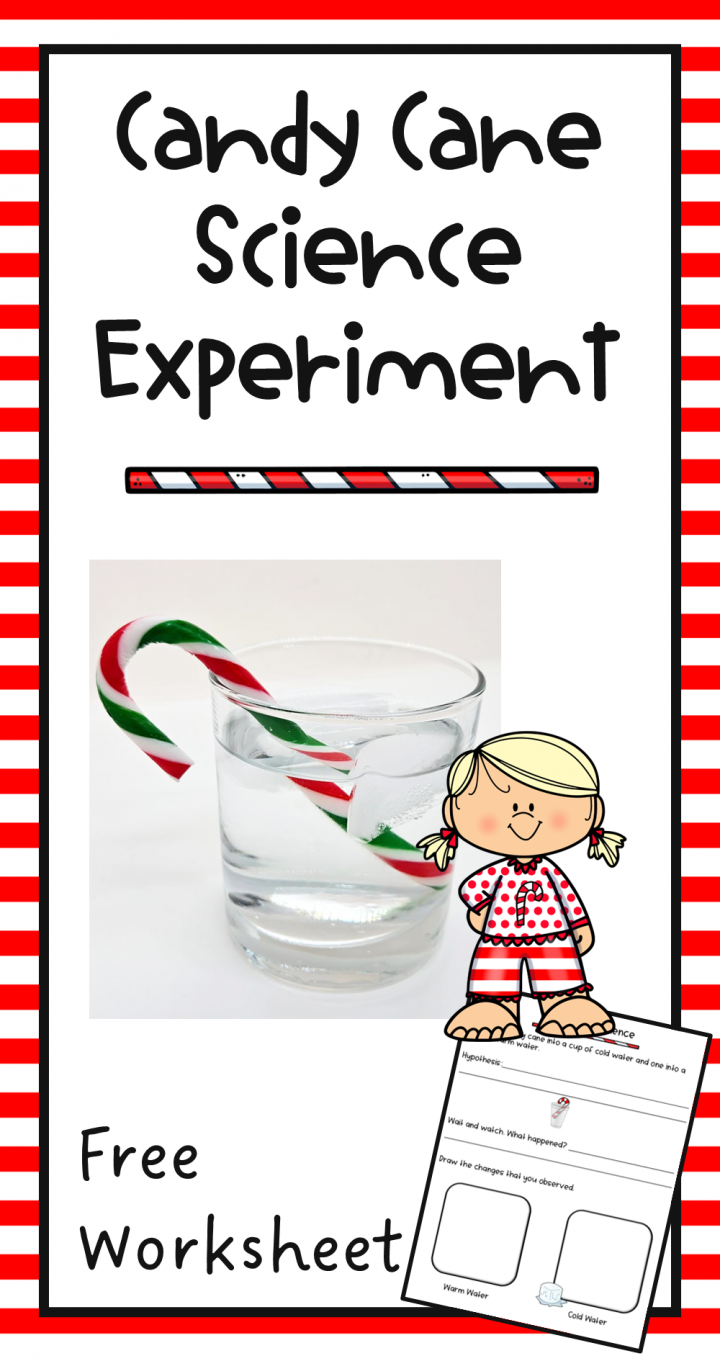
If you’re looking for more themed science experiments for Christmas, make sure to visit Hands-On Teaching Ideas popular collection of 25 Christmas STEM Activities for Kids or grab a copy of the free Christmas Escape Room Game that you can print and play at home.
Candy Cane Science Experiment
The materials you need for this experiment are really simple, and children can touch all of the materials so they are able to do all of this hands-on experiment. For all science experiments, please still make sure children are supervised by an adult. You will need:

- Candy Canes
- Plastic Cups
- Toothpicks or Sucker Sticks (Optional)
- Magnifying Glasses (Optional)
- Water (Warm and Cold)
- Candy Cane Experiment Worksheet (Free Below)
If you have the option to use clear or plastic cups, they work best. Children love to watch the experiment happen right before their eyes. With clear cups they can see the candy cane from all angles. Once you have all of your materials ready, you can start the easy science projects.

Candy Cane Experiment Steps
To start, give every child their own candy cane to experiment with. I had children partner with a buddy and gave one child warm water and one child cold water. This way the partners could watch what happened in both cups.
One of the special things about this science experiment is that children can use their sense of taste. Usually in science we avoid using this sense, so children will be very excited to get to taste their experiment.
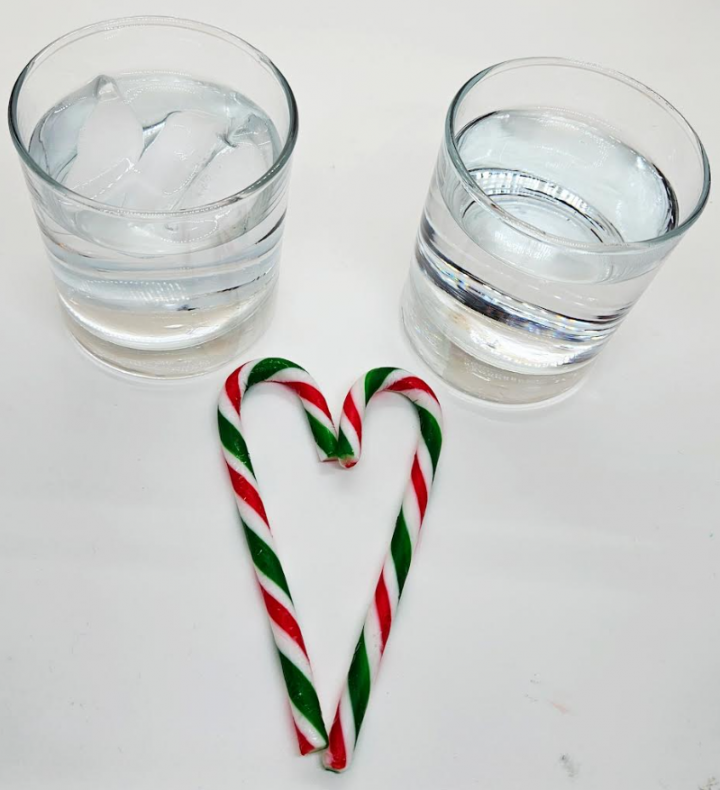
Start by letting children take a few licks of their candy cane. After a few licks give each child a cup filled with either lukewarm water or cold water. The colder the water you can use the better. Add some ice to make it extra cold! Make sure that the warm water is not too hot – about hot chocolate temperature is best.

Children can take a small sip of their water to observe that it is simply water. Next, children can drop their candy cane into the water. As the candy cane sits in the water, children then used their magnifying glasses to inspect what is happening. In my experience using magnifying glasses for science makes everything more fun for kids.
The glasses are a great way to encourages children to be mindful during the experiment and take time to really inspect what’s happening. It also makes kids feel like real scientists. Encourage children to smell the water as well as watch. Encourage children to not stir the water initially. Let the candy cane sit for 10-15 minutes.
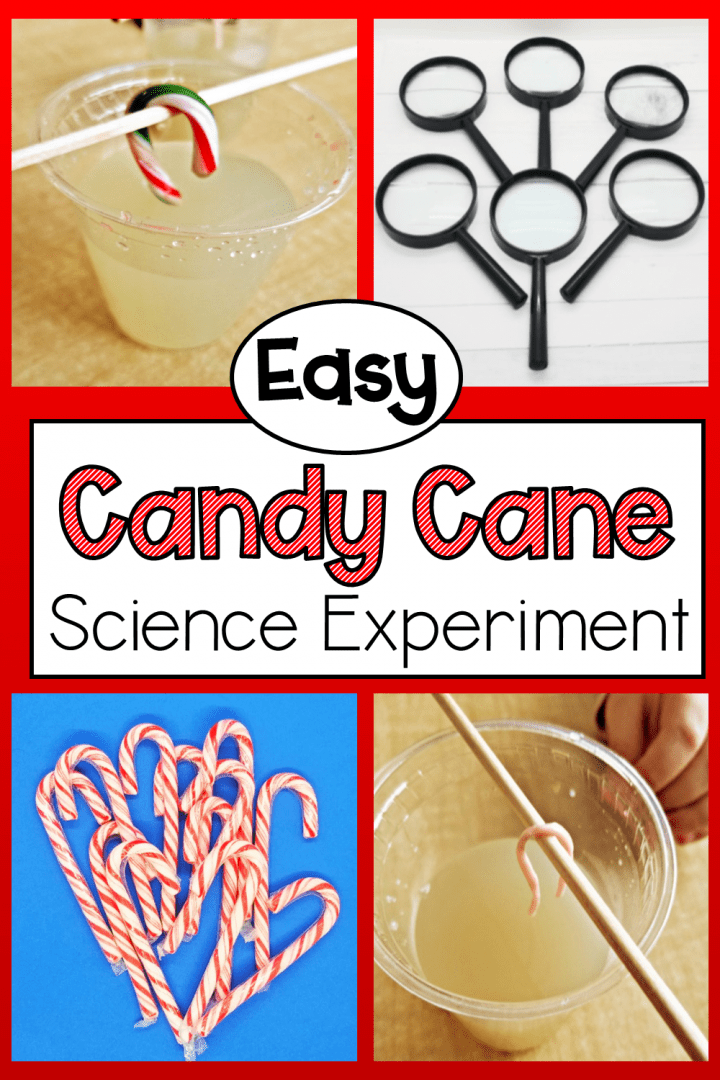
Easy Science Projects for Kids
At first, there won’t seem to be any changes, but the bottom of the cup will quickly look foggy and a bit green or red. Children will quickly notice that something is happening in their water and with their candy cane.
After several minutes, you can give kids popsicle sticks for children to mix their candy cane and water (or they can just stir with the candy cane). Children noticed right away that some of the color on their candy cane had faded or ‘disappeared’.
Lift the candy cane out of the water and inspect what has changed. Where did the color on the candy cane go? Have children predict what they think happened and where the color went. This is a great opportunity to talk about things dissolving rather than disappearing.
After noticing the color changes in the candy canes, compare the candy canes from the warm water to the candy canes in the cold water. The differences between the two cups will be apparent quickly.
Easy Science Projects Results
The candy canes in the cold water will look largely the same, depending on how much time has passed. Some of the color will have dissolved, but it will still looked similar to when we started.
The candy canes in the warm water, however, looked very different! The candy canes were dissolving into the warm water. The stripes were gone and some of the candy cane had also dissolved. Despite the water temperature being the only difference, what happened in the cups was very different.
The molecules in the warm water are moving faster and break down the candy cane faster. We can’t see this with our eyes, or with the magnifying glasses, but on a molecular level we know that it’s happening because of the change we see between the candy canes.
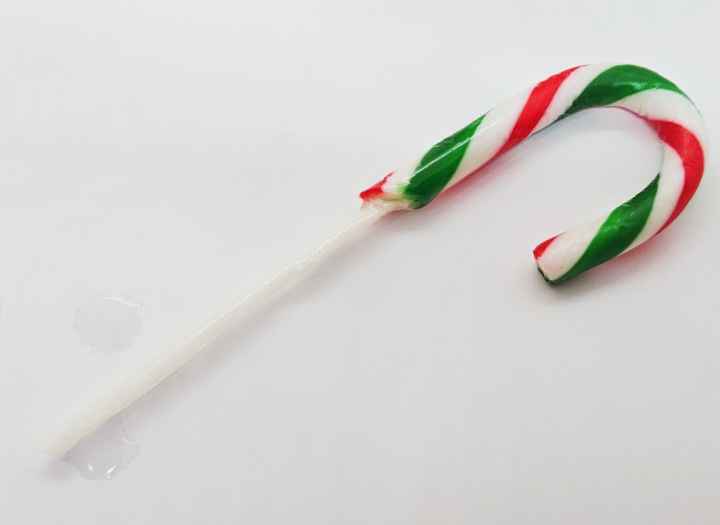
A simple connection is what we see happen with tea or coffee. When sugar is added to these hot drinks, the sugar dissolves very fast and mixes into the drink. Children may believe that the candy canes disappear because eventually they cannot see it in their cup.
This is a fair prediction at this age, but there is another step to this experiment to show children that the candy cane did not disappear.
Easy Science Projects with Candy
My students favorite part of this experiment happened once the candy cane dissolved. Remind children that they had tasted the water earlier in the experiment and confirmed that it was just plain water. Now have children take a sip of their water that the candy cane had been in. Very quickly children will notice that the water now taste like candy cane! The candy is still in the cup, but had taken on a different form.
It was a really easy science project to do with kids. The experiment is a great, hands-on, way to introduce concepts such as dissolving and how different materials can change the way they look or act. Also the experiment touches on how hot and cold water may look the same, but they behave very differently.
Easy Science Projects – Extra Projects
The warm water works well with young children because they are then able to drink the water; however, if you want to see what happens with hot water, it is a great extension. If you use hot, or boiling water, just make sure that children keep their distance and don’t taste the water after. You will find that the candy cane dissolves very quickly.
To extend this experiment, you can use the same idea any time of year. Instead of candy canes, try using chocolate or gummy bears. What happens? Do they react differently?
To keep the learning happening, make sure to grab the free printable worksheet that goes along with this candy cane experiment. Click the button below and subscribe to Hands-On Teaching Ideas, for free.

You can also extend the activity further by altering the experiment. Instead of using water, try using other liquids. What happens if you put the candy cane into vinegar, or lemon juice. What would happen to the candy in pop or other carbonated drinks. Try different liquids to see if there is any difference.
Candy Cane Science Experiment
Download the Free Worksheet Here
Join Hands-On Teaching Ideas to gain access to my Free Resource Library filled with lots of printable learning resources, from a choice board full of STEM activities and easy science projects for kids to escape room games, you can download anything that interests you for your classroom or home.
Click on the box below and subscribe through Grow. Once you subscribe a page will download right away with the Candy Cane Experiment worksheet. Shortly after subscribing, you will receive an email with a link to the Free Library where you can choose any resources that interest you. When subscribing through Grow you will also unlock the other freebies on the site.
More Hands-On Teaching Ideas
If you are looking for more activities and ideas to do in the classroom, or at home with kids, below are some of my favourite and most popular learning activities.
From more easy science projects and experiments to Hands-On Teaching Ideas most popular holiday collection of escape room games that you can play virtually anywhere, you’ll find lots to keep you busy all season long.


